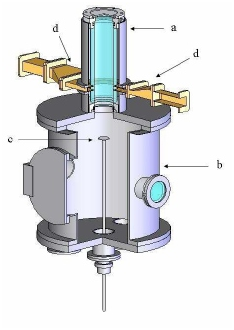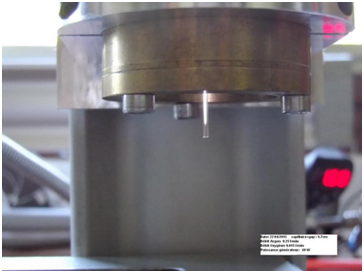Surface treatments with microwave plasmas
Contact : Olivier LEROY
A large-diameter, low-pressure microwave reactor for depositing thin films or treating surfaces can be used as a source of active species for work of interest to researchers working at the chemistry-biology interface.
The work undertaken a few years ago on the functionalisation of PET surfaces and the grafting or polymerisation of organic sugars in collaboration with Philippe Roger's team from the Multifunctional Organic Chemistry Laboratory at ICMMO (Institut de Chimie Moléculaire et Matériaux d'Orsay) is of particular interest for biological applications (enzyme catalysis, biocompatibility). Here again, a systematic correlation is being sought between the functional properties of surfaces, discharge conditions and plasma properties.

a) discharge tube
b) diffusion chamber
c) movable sample holder
d) waveguide and surfaguide
Another device resulting from our work on the generation of micro-discharges in capillaries consists of a microwave micro-torch. Unlike the previous device, this one is particularly suitable for treating small surfaces. It also has the advantage of opening at atmospheric pressure (i.e. without a pumping device), as illustrated below:

